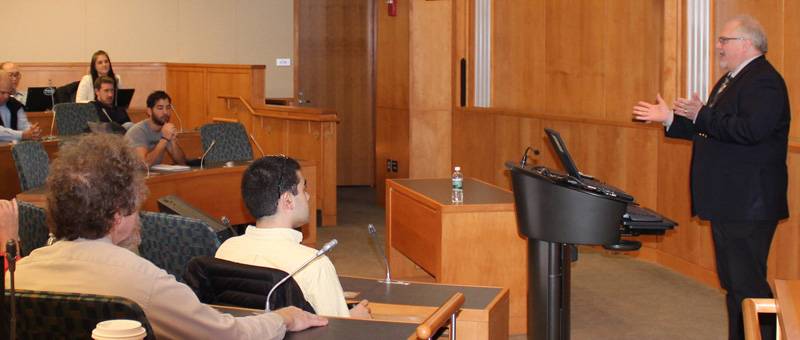Open Road for Ford Motor Company and Big Data
Ford sees data as a potentially valuable asset with three key information challenges.

Like any major corporation operating in the digital age, Ford Motor Company produces a generous amount of both revenue and data every second. The company finds plenty of uses for its revenue, but what’s the value of its information?
That’s a question for John Ginder, Ford’s manager of systems analytics and environmental sciences. As Ginder explained in his recent Britt Technology Impact Series talk, “Big Data in the Driver’s Seat: Revving Up The Auto Industry,” which was organized by Tuck’s Center for Digital Strategies, Ford is looking at big data as a potentially valuable asset with three key information challenges: volume, velocity, and variety.
Ginder gave a few examples of each dimension. On volume, consider that each of Ford’s 90 plants produces one petabyte (one billion gigabytes) of data per day. Velocity? Each of its cars, while in use, generates 25 gigabytes of data per hour. As for variety, Ginder mentioned just a few of the possible inputs: data on vehicle engineering; environmental conditions; customer satisfaction as measured in social media; and the supply chain (which includes more than 1,000 parts suppliers). “This spans all the things we do at Ford,” Ginder said.
Ford has already successfully implemented big data in numerous ways, Ginder explained. Some examples include the use of Internet search data for sales forecasting; a 2010 project that invited 10,000 people to vote on their most desired features in an automobile; and a system that provides recommendations to Ford dealers on which cars and configurations they should order.
The future of big data at Ford is still very much open ended. “This is a journey we’re still on,” Ginder said. But there are hints, based on what Ginder admires in the marketplace. One is Disney’s new “MyMagic+,” a bracelet with a radio-frequency identification chip that will serve as a wallet, theme-park ticket, and room key for customers. Another is “Court Vision,” a website that uses spatial and visual analytics to determine basketball performance. “These kinds of approaches could be increasingly valuable as we learn how our customers are engaging with us,” Ginder said.
Technology, of course, is nothing new to Ford, at least when it comes to automobiles. Information technology is another story. As proof of its commitment to IT, Ford’s Research and Advanced Engineering department recently opened a laboratory in Silicon Valley, and the company is working on a project called Ford Open XC, which will create open-source software and hardware so people can develop apps for Ford automobiles. And where apps go, big data is sure to follow.